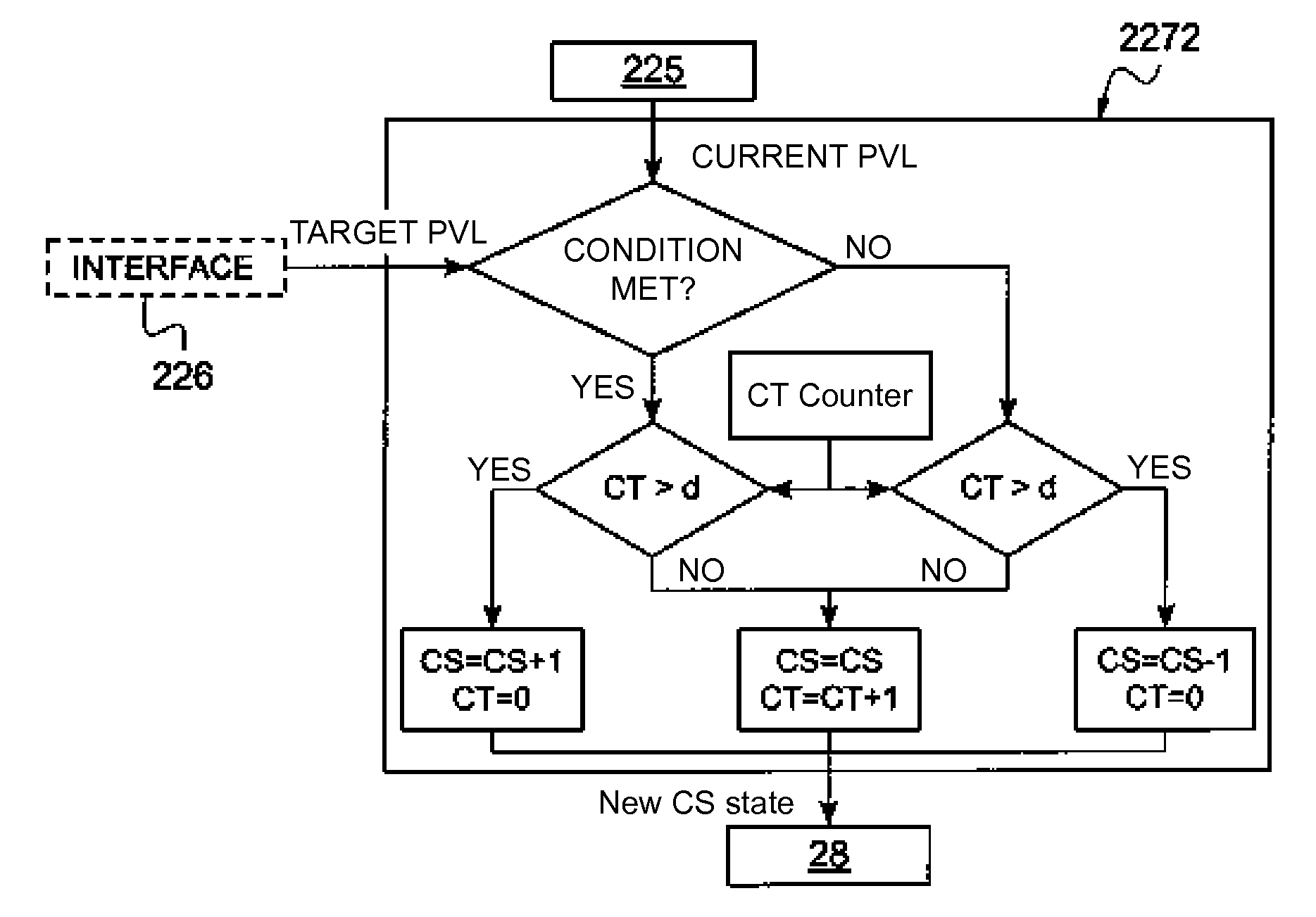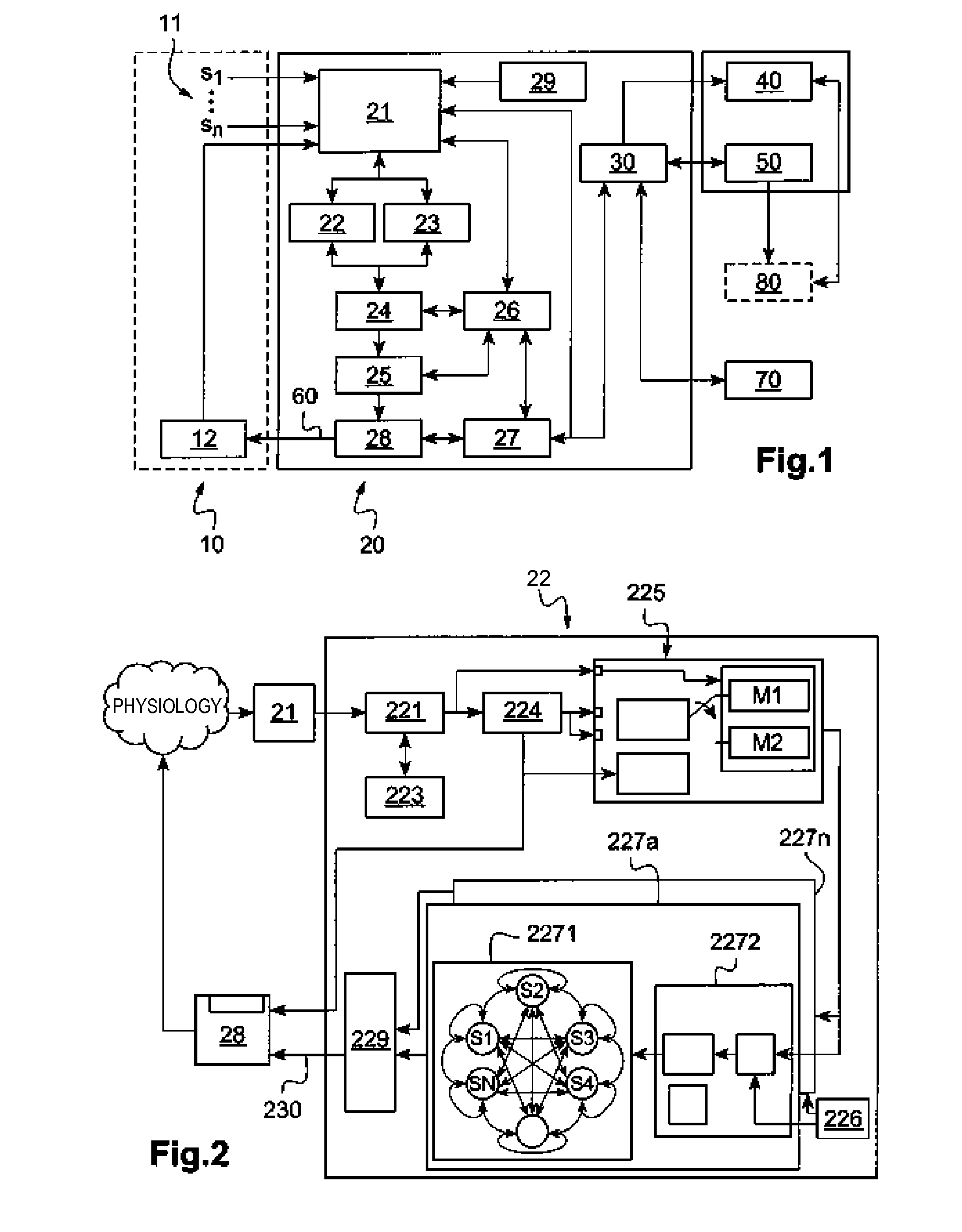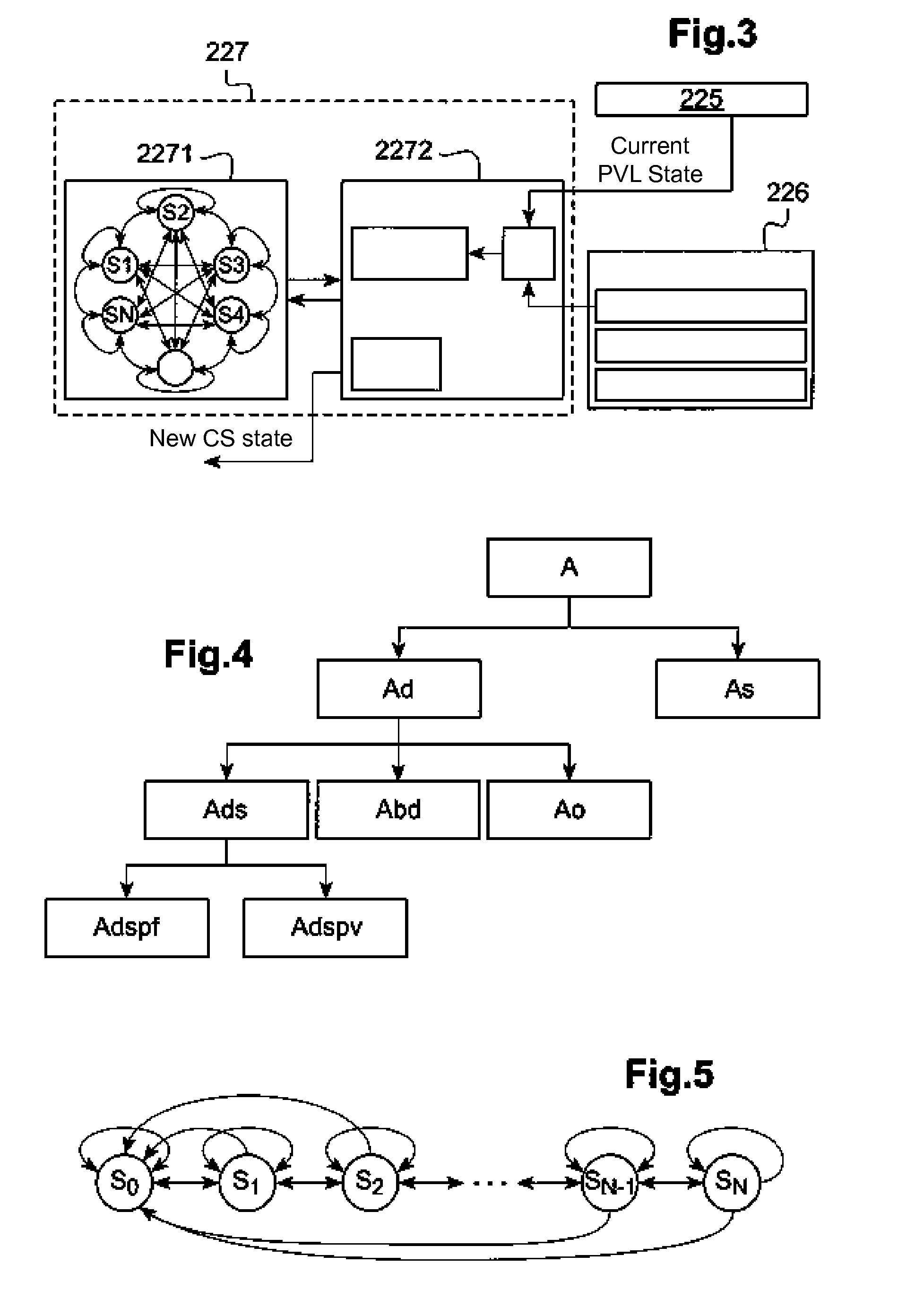System for stimulation therapy of the vagus nerve by implementation of a self-adaptive state transition model based on physical or physiological levels
a self-adaptive state and transition model technology, applied in the field of system for vagus nerve stimulation by implementation of a self-adaptive state transition model, can solve the problems of complex application of optimal stimulation, difficult to define optimal, computational complexity required to implement the controller,
- Summary
- Abstract
- Description
- Claims
- Application Information
AI Technical Summary
Benefits of technology
Problems solved by technology
Method used
Image
Examples
first embodiment
[0210]In a first embodiment, an estimate of the parameters is made in a remote external system 270 including the parameters reconfiguration module 252 and the analysis module 253, as illustrated in FIG. 27. This estimate is based on a scan of parameters and on an analysis of its effects, as described above. This estimate can be made intraoperatively or postoperatively during a follow-up session, using a remote analysis module.
second embodiment
[0211]In a second embodiment, illustrated in FIG. 28, an adaptive estimation of the parameters is carried out in an integrated manner, that is to say that the update of the values RS and the reorganization of the transition matrix T are formed within the implantable device, which implies that the analysis module 253 and the reconfiguration module 252 are embedded in the implantable device.
[0212]Thus the implantable device is auto-adaptive and autonomously applies a learning of typical values.
[0213]In summary, the adaptive estimation feature of parameters is a refinement of the state transition control system described in the foregoing, whether it is implemented on a deterministic, stochastic base, or on a set of control devices combining the deterministic and stochastic approaches.
[0214]In the case of adaptation according to several remote temporal resolutions, with the embodiment of FIG. 27, the adaptation of the state transition model can be performed at different temporal resolut...
PUM
 Login to View More
Login to View More Abstract
Description
Claims
Application Information
 Login to View More
Login to View More - R&D
- Intellectual Property
- Life Sciences
- Materials
- Tech Scout
- Unparalleled Data Quality
- Higher Quality Content
- 60% Fewer Hallucinations
Browse by: Latest US Patents, China's latest patents, Technical Efficacy Thesaurus, Application Domain, Technology Topic, Popular Technical Reports.
© 2025 PatSnap. All rights reserved.Legal|Privacy policy|Modern Slavery Act Transparency Statement|Sitemap|About US| Contact US: help@patsnap.com



